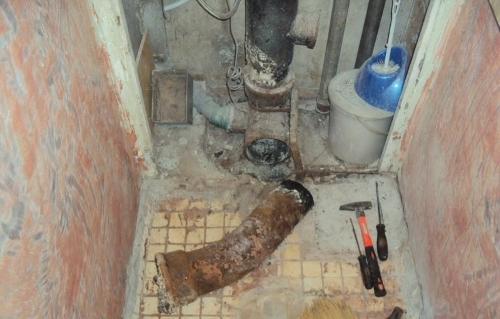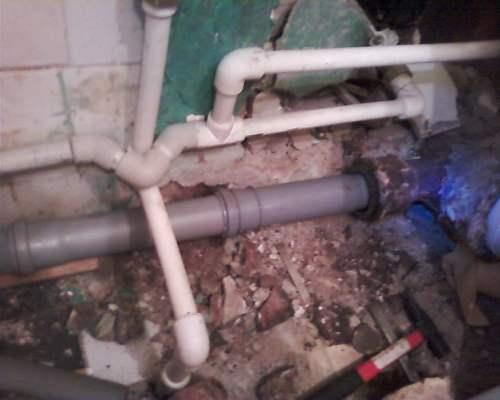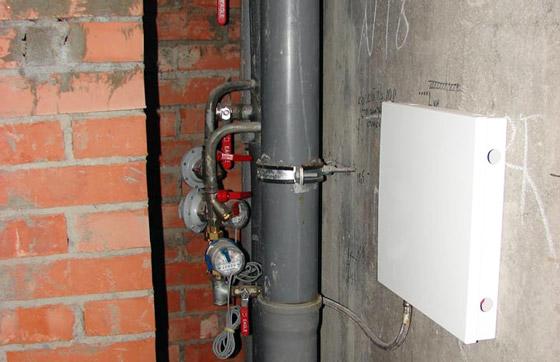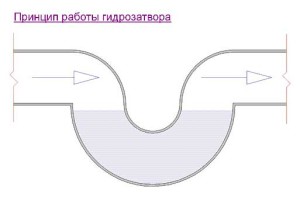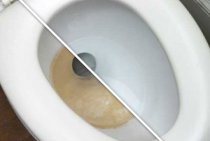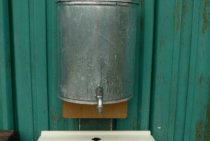Dismantling of the old pipeline
To carry out work on dismantling the old and assembling a new sewerage system, the following tools will be required:
- grinder or hacksaw;
- impact drill or hammer drill;
- hammer;
- chisel;
- wrench;
- file;
- Screwdriver Set;
- mounting gun (if not available, you can use the hammer handle).
Dismantling steps
Dismantling is carried out in the following sequence:
Completely free the room, gaining access to all pipes.
Turning off the water supply.
Disconnect the hose from the toilet cistern with a wrench.
Loosen the screws holding the toilet to the floor. Remove the toilet.
Dismantle the old system
At a distance from the riser, you can use a hammer to break cast-iron pipes (cast iron is a brittle material).
Carefully, using a grinder or a hacksaw, disassemble the sewer pipes in the apartment adjacent to the input tee installed on the riser.
Clean the inlet tee socket. The remains of the old grease must be removed.
Dismantling of cast iron pipes
You should be especially careful when dismantling pipes adjacent to the riser, since excessive force can damage the riser and break the tightness of the sewer system in all apartments that are above and below you.
Assembly of a new sewer pipeline
Replacing sewer pipes in an apartment begins with installing a new rubber seal in a thoroughly cleaned tee socket. Fixing is done with silicone sealant.
For installation, pipes and fittings made of PVC (or other polymers) are used. All parts must be clean with intact cuffs. The internal sewerage system is non-pressure, the drains move due to the slope of the sewer pipes.
Cut pipes with a hacksaw. Be sure to chamfer (angle 15°) with a regular file to prevent damage to the seal by a sharp burr edge of the unfinished pipe. Shaped parts cannot be cut.
The use of 90° elbows is not recommended. Better use two 135° angles
Such a scheme will avoid blockages, increasing the throughput of sewer pipes.
Pipes and fittings for domestic sewerage
Step by step assembly instructions:
- Install the toilet and bidet using a pipe with a diameter of 110.
- Observing the slope (3% for a pipe diameter of 50 mm and 2% for a pipe diameter of 100 mm) to the lowest point - the input tee installed on the riser, make the transition to pipes of 50 mm in diameter. The transition must be smooth. First, a segment of 100 - 150 mm with a diameter of 100 mm is installed. Then, fixing each joint, go to a diameter of 50 mm.
Features of installing plumbing fixtures
The installation height of each device depends on the distance from the entry point (main riser). The farther the device is located from the riser, the higher the drain should be located. The washing machine and dishwasher are installed without raising their drain above the floor.
Installation of intra-apartment sewerage does not require pipe welding. Pipes and fittings are simply inserted into each other (straight part into socket). Tightness is ensured by seals installed in the grooves of the sockets. To ensure the strength of the joint, it is recommended to use silicone sealant. Lubrication prolongs the life of the seals and prevents the cuff from sticking to the pipe.
Laying new plastic pipes
When assembling the intra-apartment pipeline, you need to remember about the temperature expansions at which a gap of 10 mm is needed to compensate for the change in length. The pipe is pushed into the socket until it stops, a mark is made on the pipe, pulled back 10 mm, and fixed.
Internal wiring of the sewerage system
A toilet and a bidet are connected to the main line with a diameter of 110 mm, the rest of the bathroom and toilet appliances are connected to the 1st main line with a diameter of 50 mm, and kitchen appliances are connected to the 2nd main line.
Sewer pipes in the apartment can be located both vertically and horizontally. To fix the pipeline without distortions, a fastening clamp is used. The clamp is installed under the socket so that it does not slip off during installation.
The distance between the clamps in the case of a horizontal arrangement of pipes is 10 diameters, i.e. for a pipe with a diameter of 50 mm, the distance between the fasteners will be 500 mm. With a vertical arrangement - 100 or 200 cm.
Fastening types:
- hard;
- floating.
Rigid fastening fixes a pipe in all directions. The floating mount allows the pipes to move in the longitudinal direction.
Rigid fastening with a clamp
The role of the water seal in the sewer pipeline
Sanitary appliances (sink, sink, washbasin, shower, bath) are connected to the internal sewerage system using siphons that act as a water seal and are connecting elements between the pipe and appliances. The bidet and toilet have a water seal built into the design.
To prevent gases and an unpleasant smell from the sewer system from entering the apartment, water seals are used. This is a water plug formed when 2 pipes drop in height. The water barrier completely blocks the cross section of the pipe. After draining, the plug is replaced with a new one. If you do not use the bathroom for a long time, the liquid evaporates, the water seal dries up, and an unpleasant odor enters the apartment. To fix the problem, just drain the water.
water seal
Replacing sewer pipes in an apartment requires care and accuracy. Plastic pipes are easy to install. It is necessary to represent the principle of operation of the sewage system, which will make it possible to avoid errors when assembling the pipeline and connecting devices.
